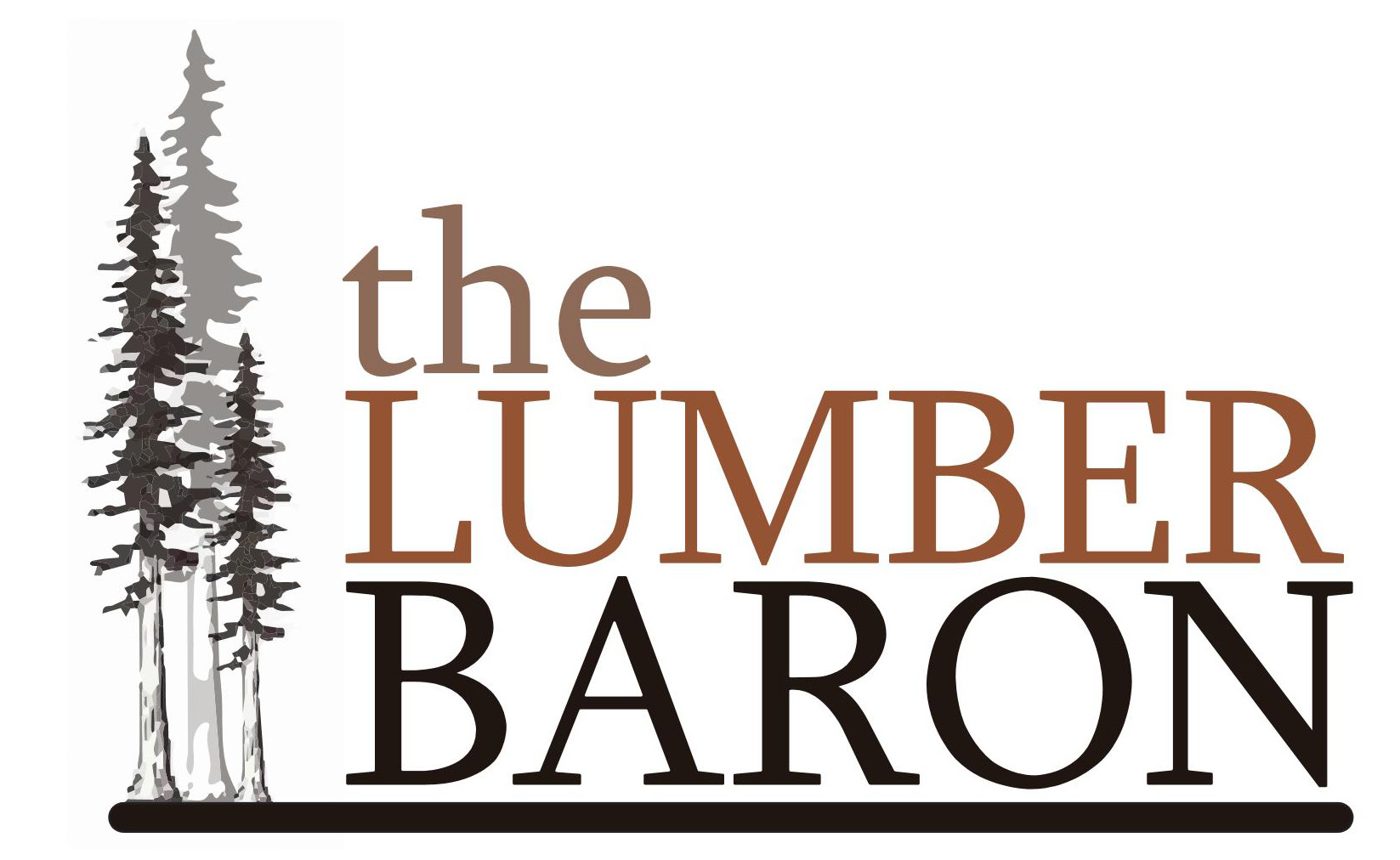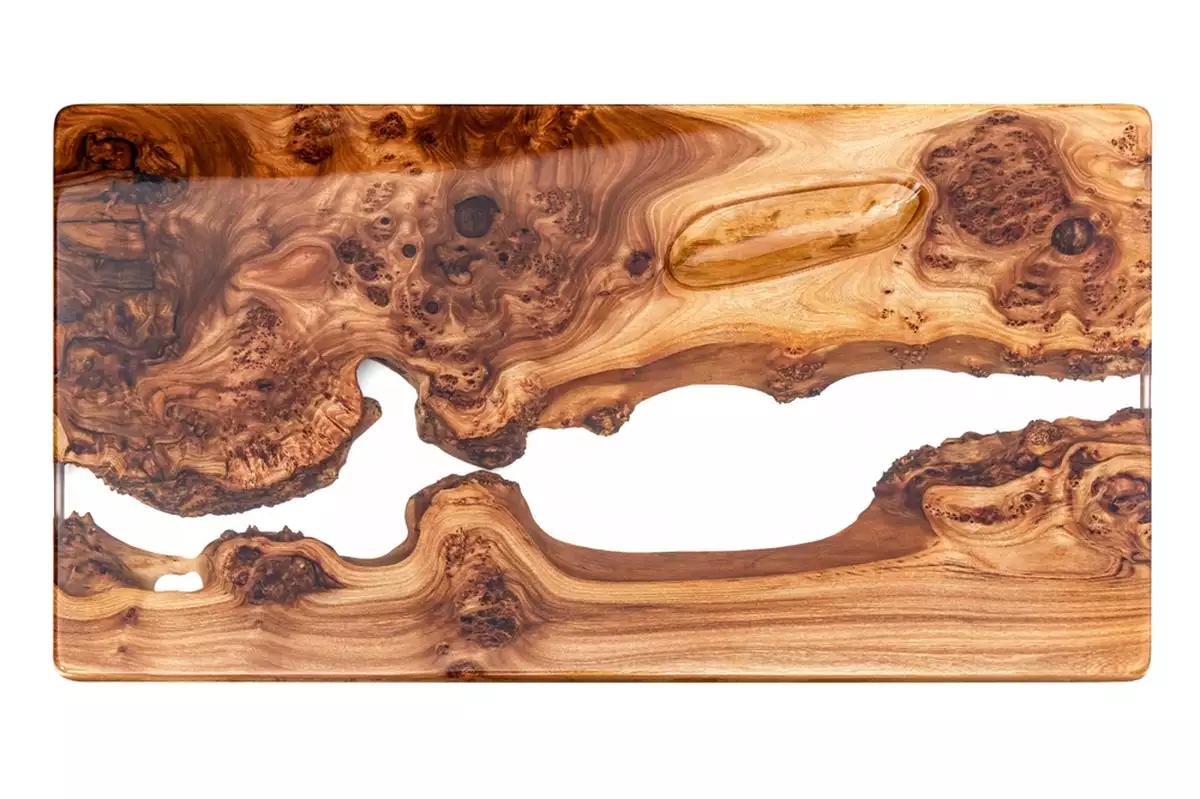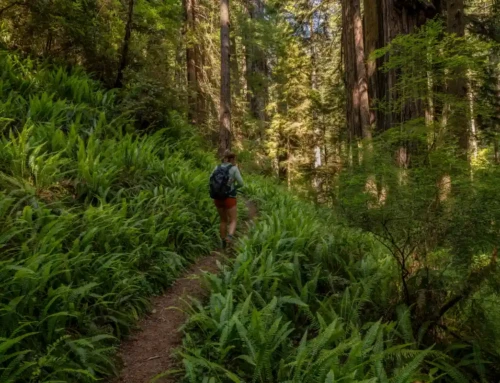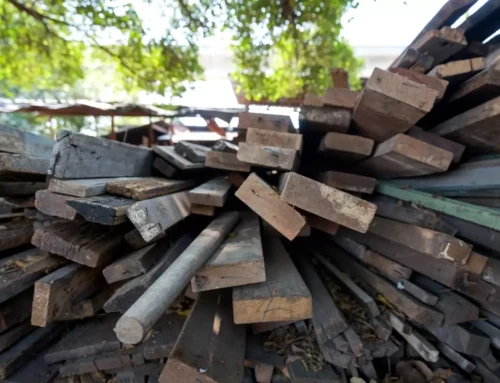TL;DR: Buying live edge slabs can feel overwhelming for beginners, but understanding what affects their price makes it easier to choose the right piece for your project. This guide explains how species, size, and craftsmanship all play a role in value and helps you shop confidently for high-quality live edge wood slabs.
- Learn what defines a live edge slab of wood and why each one is unique.
- Discover how wood type, size, and grain pattern influence pricing.
- Understand the importance of proper drying, flattening, and sourcing.
- Get step-by-step tips for buying and transporting live edge wood slabs for sale.
- See why The Lumber Baron’s live edge slab lumber for sale stands out for quality, sustainability, and expert care.
Live edge slabs have become a favorite among woodworkers, furniture makers, and homeowners who love the natural beauty of wood. But if you’ve never purchased a live edge slab before, understanding how pricing works can feel confusing. Why does one slab of walnut cost twice as much as another? And what should you look for when browsing live edge wood slabs for sale?
This guide from The Lumber Baron will walk you through the basics—from what defines a live edge slab of wood to the key factors that influence price—so you can shop with confidence.
What Is a Live Edge Slab?
A live edge slab is a cut of lumber that preserves the natural shape of the tree. Instead of squared-off edges, the sides follow the original contour of the trunk, complete with knots, burls, and unique grain patterns. This organic look gives every piece a one-of-a-kind character that’s impossible to replicate with manufactured lumber.
Live edge wood slabs are often used for:
- Dining and coffee tables
- Countertops and bar tops
- Floating shelves
- Headboards and mantels
- Custom furniture and art pieces
At The Lumber Baron, each live edge slab of wood is hand-selected for exceptional figure and grain, salvaged responsibly from sustainable or reclaimed sources whenever possible.
Why Live Edge Slabs Vary in Price
When you start shopping for live edge slabs, you’ll notice that prices vary widely—from a few hundred dollars to several thousand. That’s because no two pieces are identical, and several factors determine their value.
1. Species of Wood
The type of wood is the most significant factor affecting cost. Hardwoods like walnut, maple, and oak tend to be more expensive than softwoods like cedar or pine. Rare or exotic woods—such as monkey pod, acacia, or curly redwood—command premium prices due to limited availability.
At The Lumber Baron, you’ll find a rotating selection that includes:
- Walnut: prized for its deep, rich tones and striking grain.
- Maple: smooth and light, perfect for modern, bright interiors.
- Redwood: known for its warmth and curl, salvaged from historic sources.
- Acacia, Elm, Sycamore, and Cottonwood: each with distinctive texture and color.
2. Size and Thickness
Larger slabs naturally cost more because they require bigger, older trees. A 10-foot walnut slab that’s 3 inches thick is rare and heavy—potentially weighing hundreds of pounds—so it’s priced accordingly. Thicker slabs also require longer drying times and are more challenging to transport and store.
3. Figure and Grain Pattern
Not all wood slabs with a live edge are created equal. Unique grain features such as curly figure, spalting, knots, or burls can dramatically increase a slab’s value. These visual characteristics make the finished piece truly artful, and collectors or designers often pay a premium for standout pieces.
4. Drying and Milling Process
Before live edge slab lumber for sale can be used, it must be carefully dried to prevent cracking or warping. Air drying and kiln drying both take time and expertise, especially for large slabs. Proper flattening and surfacing also require specialized equipment.
At The Lumber Baron’s Richmond facility, slabs are meticulously cleaned, measured, and cataloged—ensuring that every piece is stable, beautiful, and ready for your project.
5. Sustainability and Source
Many customers prefer salvaged or reclaimed slabs because they tell a story. A tabletop made from the Bay Bridge or Treasure Island has history embedded in every grain. Sourcing, transporting, and preparing these reclaimed woods takes extra effort, but they also add meaning—and value—to your final project.
How to Shop for Live Edge Wood Slabs
Buying a live edge slab of wood isn’t the same as picking a 2×4 from the hardware store. Every piece is unique, and your selection process should be too.
Step 1: Define Your Project
Determine how you plan to use the slab. A dining table requires a long, wide piece with a consistent thickness, while a smaller slab might be perfect for a desk or shelf. Bring your measurements and an idea of the finished look you want—rustic, modern, or natural.
Step 2: Explore Available Inventory
At The Lumber Baron, each slab is numbered, photographed, and accompanied by a close-up video on our website. You can browse live edge wood slabs for sale online and call to get pricing and availability. Because many slabs weigh several hundred pounds, in-person viewing requires a deposit, but samples and pre-made tables are available in the Richmond showroom.
Step 3: Consider Finishing Options
Do you plan to finish the slab yourself, or would you prefer professional surfacing and flattening? Starting in December 2024, The Lumber Baron has offered in-house slab preparation services, ensuring your wood is perfectly ready for fabrication.
Step 4: Ask About Moisture Content
A slab that isn’t fully dry can warp or split over time. Always confirm whether your chosen piece is ready for use. Kiln-dried slabs are more stable and typically command higher prices, but they save you time and risk in the long run.
Step 5: Factor in Weight and Transport
Live edge wood slabs can weigh hundreds of pounds, so plan how you’ll transport and move them safely. The Lumber Baron’s team can provide guidance on loading and handling, especially for larger pieces.
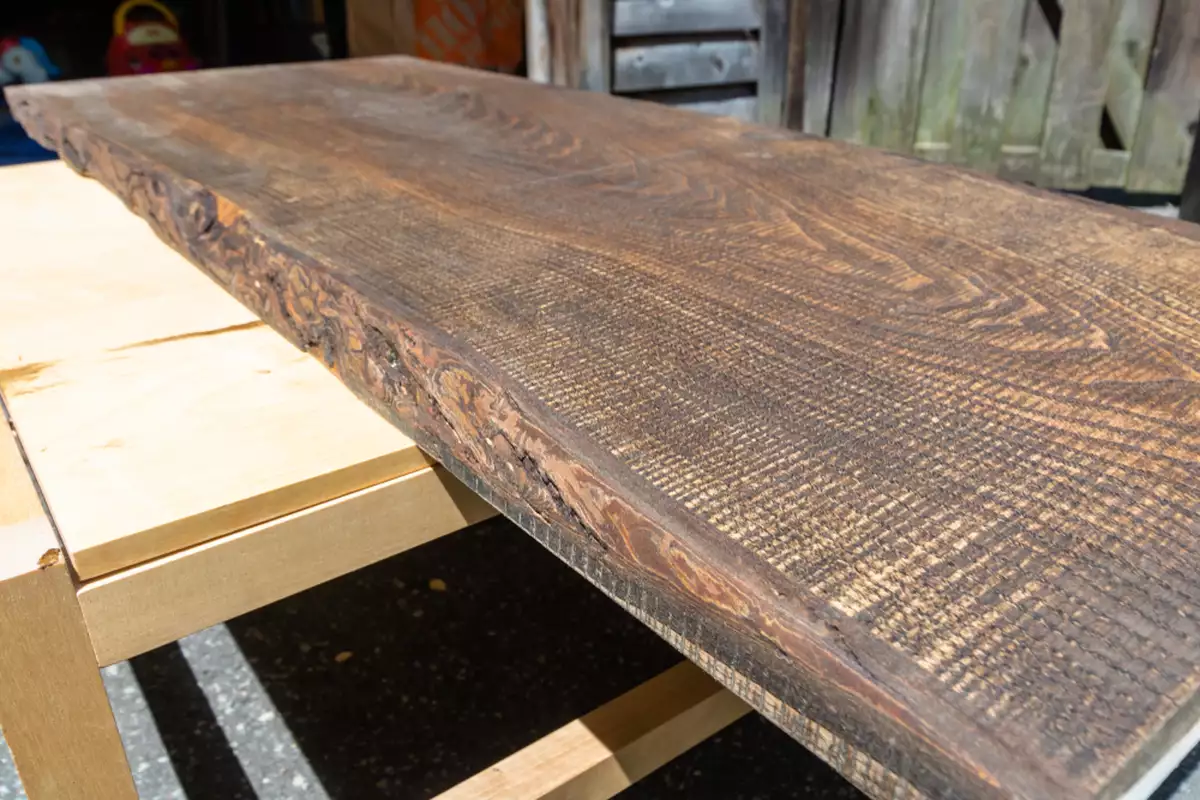
How Pricing Typically Works
While every piece is unique, live edge slabs are generally priced by board foot (a unit of volume equal to 1 inch thick × 12 inches wide × 12 inches long). However, the per-foot cost can vary dramatically depending on the factors mentioned above.
Here’s a general idea of what influences cost per board foot:
- $15–$25/board foot: Common domestic hardwoods like oak or maple with simple grain.
- $25–$40/board foot: Walnut, cherry, or pieces with moderate figure or color variation.
- $40–$80+/board foot: Rare, figured, or reclaimed slabs with unique history or visual character.
Because each slab is one of a kind, final pricing also accounts for its aesthetic appeal—similar to how artwork is valued.
Why Buy from The Lumber Baron
The Lumber Baron has been trusted by builders, artists, and designers for more than four decades. What started as a small family firewood business has grown into one of California’s most respected sources for redwood and reclaimed materials.
Today, our live edge slab lumber for sale continues that legacy of craftsmanship, sustainability, and care. Each slab is:
- Responsibly salvaged or reclaimed from local and historic sources.
- Carefully dried, cleaned, and cataloged for quality assurance.
- Supported by expert staff who understand grain, figure, and wood movement.
- Available for professional flattening and surfacing at our Richmond location.
Buying from The Lumber Baron means you’re not just purchasing wood—you’re investing in a piece of California’s history and supporting a local, family-run business that values craftsmanship and connection.
The Bottom Line
Whether you’re a seasoned craftsman or a first-time buyer, understanding the factors that affect live edge wood slab pricing will help you choose the right piece for your project and budget.
Remember, a slab’s value isn’t just about size or species—it’s about the story it tells, the character in its grain, and the hands that bring it to life.
If you’re ready to explore our selection of live edge wood slabs for sale, visit The Lumber Baron’s Richmond showroom or browse our online catalog to find your perfect match.
